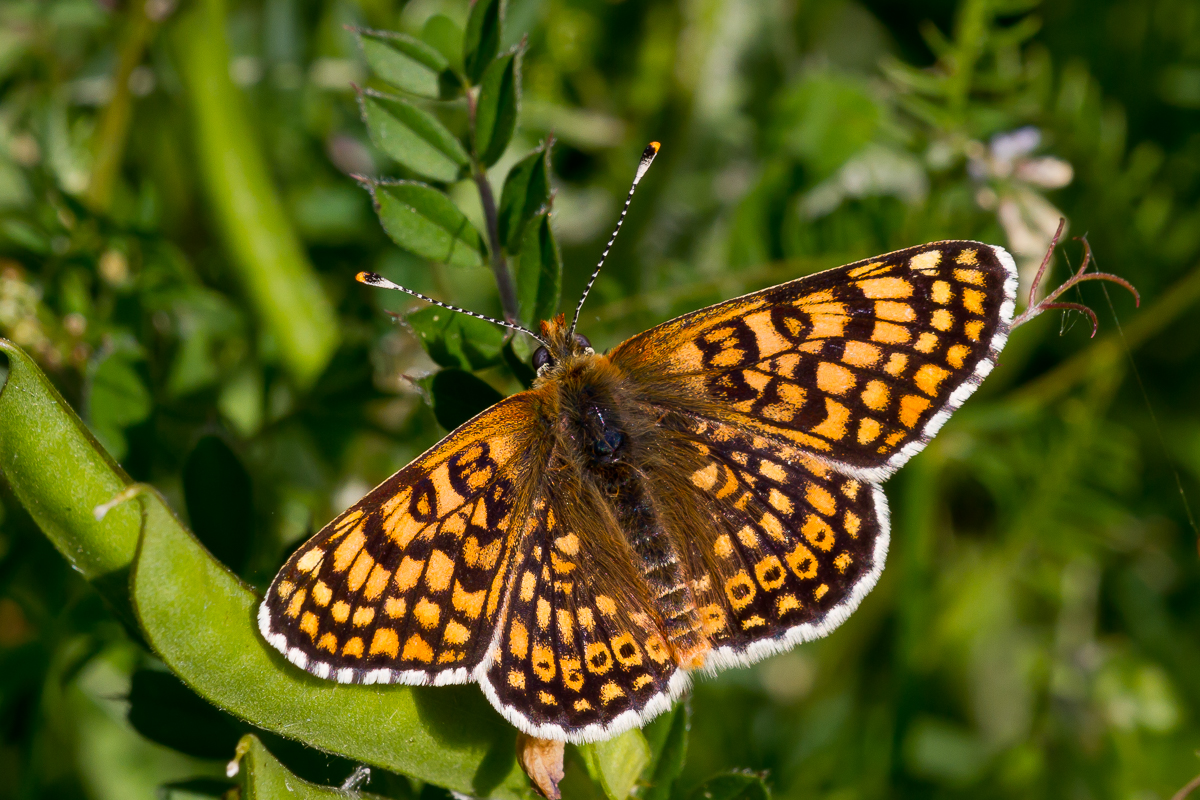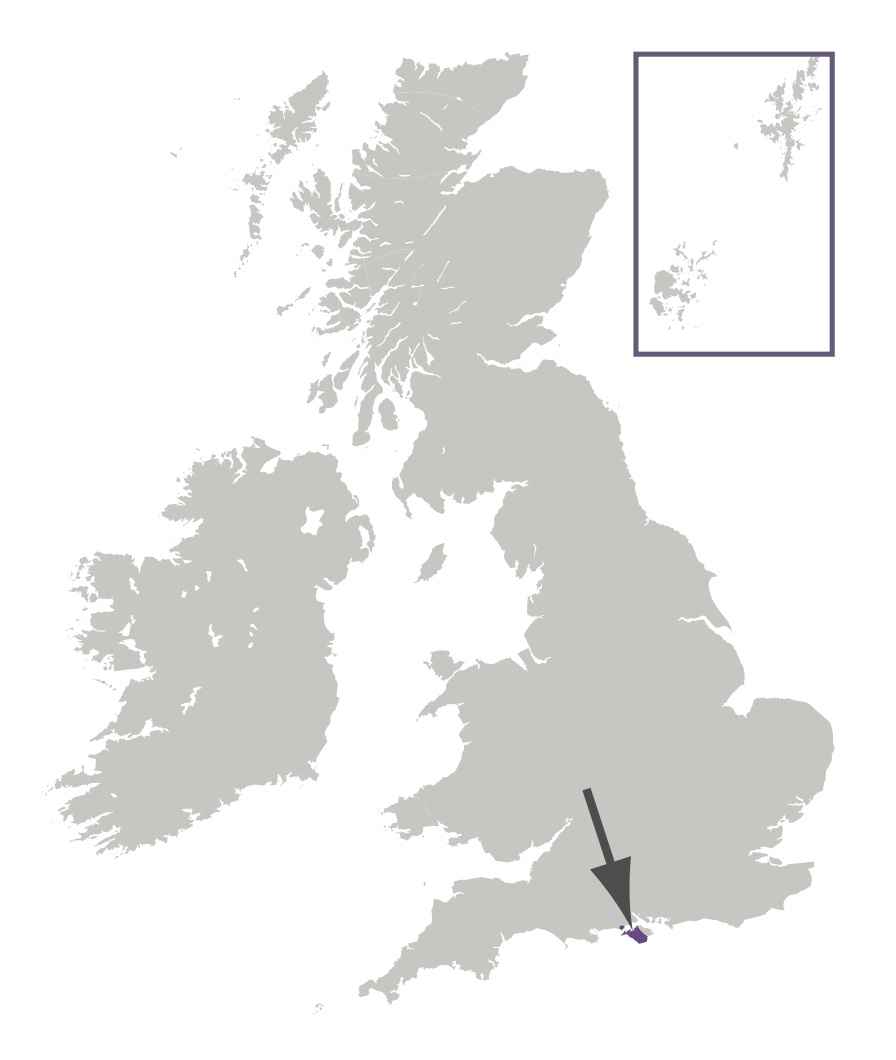
Photo © Peter Eeles
The Glanville Fritillary is named after Lady Eleanor Glanville, a 17th century Lepidopterist who discovered this species in Lincolnshire. After her death, one of her sons contested her will on the grounds of lunacy, as eloquently described by Moses Harris in "The Aurelian" in 1766: "This Fly took its Name from the ingenious Lady Glanvil, whose Memory had like to have suffered for her Curiosity. Some Relations that was disappointed by her Will, attempted to let it aside by Acts of Lunacy, for they suggested that none but those who were deprived of their Senses, would go in Pursuit of Butterflies". This butterfly was formerly found in many colonies in south-east England as far north as Lincolnshire, although it is at the northern limit of its range in the British Isles. Today it is found mainly on the south coast of the Isle of Wight, with the occasional colony, typically short-lived, appearing on the South Hampshire coast. There is also an unauthorised introduction in North Somerset. This butterfly is also found on Guernsey and Alderney in the Channel Islands. This butterfly forms discrete colonies with little interchange between them. However, the odd stray will turn up several miles from any known colony.
This is a sun-loving butterfly, being active only in bright sunshine. Like most fritillaries, it is difficult to follow as it flies with a series of rapid wing beats followed by a short glide. Both sexes are avid nectar feeders, Thrift and Bird's-foot Trefoil being particular favourites. The adults roost, often communally, on flower heads of various grasses.
The male is the most conspicuous of the two sexes, as it patrols the breeding grounds, investigating any brown object in the hope of finding a less-conspicuous virgin female in the vegetation. Even while mating the pair may remain active, flying between shrubs and even nectaring.
The female takes great care when choosing a site in which to lay her batch of eggs. Favoured sites are sheltered and warm, and where relatively-young foodplant grows vigorously with plenty of bare ground around.

This species is primarily found in locations where regular disturbance of the ground allows the foodplant to grow and flourish, as is the case in coastal areas where there are frequent cliff falls. This allows the butterfly to move to new areas as the existing habitat becomes overgrown.
Adults feed primarily on Common Bird's-foot-trefoil (Lotus corniculatus), dandelions (Taraxacum spp.), hawkweeds (Hieracium spp.) and Thrift (Armeria maritima).
The primary larval foodplant is Ribwort Plantain (Plantago lanceolata). Buck's-horn Plantain (Plantago coronopus) is also used.
